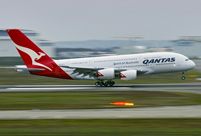 Chinese artists from Flight MH370 and their art
Chinese artists from Flight MH370 and their art
 Top 30 entrepreneurs under 30 in China
Top 30 entrepreneurs under 30 in China
 800-year-old ancient village in Shanxi
800-year-old ancient village in Shanxi
 World's top 10 most prestigious institutions
World's top 10 most prestigious institutions
 Chinese airborne troops conduct low altitude flight training
Chinese airborne troops conduct low altitude flight training
 Beautiful fisherwomen in SE China
Beautiful fisherwomen in SE China
 1,500-year-old coffin excavated from grassland in N China
1,500-year-old coffin excavated from grassland in N China
 See what Google glass captures at 'two sessions'
See what Google glass captures at 'two sessions'
 In pictures: beautiful women in different ages
In pictures: beautiful women in different ages
BEIJING, March 16 -- China on Sunday unveiled an urbanization plan for the 2014-2020 period in an effort to steer the country's urbanization onto a human-centered and environmentally friendly path.
Urbanization is the road that China must take in its modernization drive, and it serves as a strong engine for sustainable and healthy economic growth, according to the plan released by the Central Committee of the Communist Party of China (CPC) and the State Council, the country's cabinet.
"Domestic demand is the fundamental impetus for China's development, and the greatest potential for expanding domestic demand lies in urbanization," according to the National New-type Urbanization Plan (2014-2020).
At present, the proportion of permanent urban residents to China's total population stands at 53.7 percent, lower than developed nations' average of 80 percent, and 60 percent for developing countries with similar per capita income levels as China. ( Registered urban population, or those who hold a "hukou" under China's household registration system, accounted for only 35.7 percent in total population by the end of last year, data from the National Bureau of Statistics (NBS) showed.
An increasing urbanization ratio will help raise the income of rural residents through employment in cities and unleash the consumption potential, according to the plan.
It will also bring about large demands for investment in urban infrastructure, public service facilities and housing construction, thus providing continuous impetus for economic development, the plan said.
The number of rural migrant workers increased 2.4 percent to 268.94 million by the end of last year, accounting for 19.76 percent of the country's total population, NBS data showed.
Currently, they do not have access to the same public services as other urbanites with a city "hukou".
One of the basic principles for pushing forward urbanization before 2020 is putting people at the center and making sure that all people can enjoy the country's modernization achievements, the plan said.
The country should guide the reasonable flow of population, help rural residents become urban citizens in an orderly manner and make basic urban public services available to all permanent urban residents, it said.
Other principles set by the plan include coordinating urban and rural development, optimizing macro-level city layouts and integrating ecological civilization into the entire urbanization process.
By 2020, China's ratio of permanent urban residents to total population should reach about 60 percent, while residents with city hukou should account for about 45 percent of total population, according to the plan.
The country will help 100 million migrant workers and other permanent urban residents to get urbanite status.
China will also optimize city layouts by enhancing the leading role of major cities, increasing the number of small and medium-sized cities and improving the service functions of small towns, the plan showed.
A scientific and reasonable urban development model should be adopted, with green production and consumption becoming the mainstream in urban economic activities.
The plan added that China should strive to push for harmonious and pleasant living conditions in cities by making basic public services accessible to all permanent urbanites and pursuing better ecology, more clean air and safe drinking water, the plan showed.
The plan will provide strategic and fundamental guidance for the healthy development of urbanization across the country during the seven- year period.
The CPC Central Committee and the State Council said in a circular Sunday that governments at various levels should enhance their understanding of the new type of urbanization and steer urbanization toward the right direction.
Local authorities should earnestly implement the plan based on their respective conditions to make sure that tasks set in the landmark plan will be fulfilled, according to the circular.
This is China's first official plan on urbanization, showcasing great significance the government attaches to its urbanization process.
 Female journalists at 'two sessions'
Female journalists at 'two sessions' Interpreters serving 'two sessions'
Interpreters serving 'two sessions' Female SWAT team in Chongqing
Female SWAT team in Chongqing Top 10 safest airlines in the world
Top 10 safest airlines in the world Old photos of Anti-Japanese War
Old photos of Anti-Japanese War Mysterious 'Dolan Tribe' in Xinjiang
Mysterious 'Dolan Tribe' in Xinjiang A bite of Luoping County
A bite of Luoping County This is Shanghai
This is Shanghai Chinese airborne troops complete parachute training in various training bases
Chinese airborne troops complete parachute training in various training bases Ballerinas anywhere but onstage
Ballerinas anywhere but onstage Most unusual taxis around the world
Most unusual taxis around the world Micro-expression at 'two sessions'
Micro-expression at 'two sessions' Bridge Worship Festival in Taijiang, SW China
Bridge Worship Festival in Taijiang, SW China Hollywood documentary brings Diaoyu Islands truth to new audience
Hollywood documentary brings Diaoyu Islands truth to new audience Miss HK and actresses shine at flower show
Miss HK and actresses shine at flower showDay|Week|Month